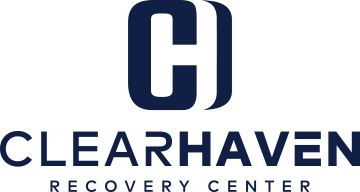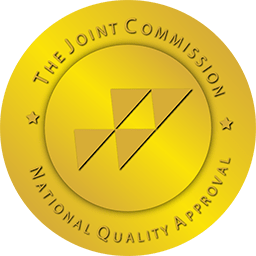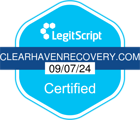Addiction is a disease that can take hold of anyone, regardless of their age, background, or socio-economic status. It is a chronic condition that can be difficult to overcome, but it is not impossible. With the right treatment and support, it is possible to break free from the grip of addiction and regain control of your life. Prescription drug rehab is one of the most effective ways to treat addiction, especially when it comes to prescription drug abuse. In this article, we’ll explore the ins and outs of prescription drug rehab and how it can help you or a loved one on the road to recovery.
Understanding addiction and prescription drug abuse
Addiction is a complex disease that affects the brain and behavior. It is characterized by compulsive drug seeking and use despite the harmful consequences. Prescription drug abuse is a form of addiction that involves the misuse of prescription medications. Many people mistakenly believe that prescription drugs are safer than illicit drugs, but this is not the case. Prescription drugs can be just as addictive and dangerous as illicit drugs, especially when they are used improperly.
Prescription drug abuse can take many forms, including taking more medication than prescribed, taking medication that was not prescribed to you, or using medication in a way that is not intended. Commonly abused prescription drugs include opioids, benzodiazepines, and stimulants. Opioids are pain relievers that can be highly addictive, especially when they are misused. Benzodiazepines are tranquilizers that can be used to treat anxiety and insomnia, but they can also be highly addictive. Stimulants are medications that can be used to treat ADHD and narcolepsy, but they can also be misused for their euphoric effects.
The dangers of prescription drug abuse
Prescription drug abuse can have a number of harmful consequences, both for the individual and for society as a whole. One of the most immediate dangers of prescription drug abuse is the risk of overdose. Prescription drugs can be deadly when they are taken in large doses or when they are combined with other substances, such as alcohol. Overdose can lead to respiratory depression, coma, and death.
In addition to the risk of overdose, prescription drug abuse can also lead to a number of long-term health problems. For example, opioids can cause constipation, nausea, and respiratory problems. Benzodiazepines can cause dizziness, confusion, and memory problems. Stimulants can cause high blood pressure, heart palpitations, and anxiety. Prescription drug abuse can also lead to addiction, which can be a lifelong struggle.
The benefits of prescription drug rehab
Prescription drug rehab offers a number of benefits for individuals who are struggling with addiction. One of the most important benefits of rehab is that it provides a safe and supportive environment for individuals to recover. Rehab centers are staffed by trained professionals who understand the complexities of addiction and can provide the support and guidance necessary for recovery.
In addition to providing a safe environment, prescription drug rehab also offers a number of evidence-based treatments for addiction. These treatments may include individual and group therapy, medication-assisted treatment, and behavioral therapies. These treatments are designed to help individuals overcome their addiction and develop the skills and strategies necessary for long-term recovery.
Types of prescription drug rehab programs
There are several different types of prescription drug rehab programs, each with its own unique approach to treatment. Some of the most common types of prescription drug rehab programs include:
- Inpatient rehab: Inpatient rehab is a residential program that provides 24-hour care and support for individuals who are struggling with addiction. This type of program is designed for individuals who require intensive treatment and support.
- Outpatient rehab: Outpatient rehab is a non-residential program that allows individuals to receive treatment while continuing to live at home. This type of program may be appropriate for individuals who have a strong support system at home and who do not require intensive treatment.
- Partial hospitalization: Partial hospitalization is a program that provides intensive treatment during the day, while allowing individuals to return home in the evenings. This type of program may be appropriate for individuals who require intensive treatment but who do not require 24-hour care.
- Intensive outpatient: Intensive outpatient is a program that provides more intensive treatment than traditional outpatient programs, but less intensive treatment than inpatient programs. This type of program may be appropriate for individuals who require more intensive treatment than traditional outpatient programs can provide.
The rehab process: what to expect
The rehab process can vary depending on the type of program you choose, but most programs follow a similar structure. The first step in the rehab process is typically an assessment, which is used to determine the individual’s treatment needs. This assessment may include a physical exam, a psychological evaluation, and a review of the individual’s medical history.
After the assessment, the individual will begin treatment. Treatment may include individual and group therapy, medication-assisted treatment, and behavioral therapies. The goal of treatment is to help the individual overcome their addiction and develop the skills and strategies necessary for long-term recovery.
The rehab process may also include aftercare, which is designed to provide ongoing support and guidance after the individual completes the program. Aftercare may include continued therapy, support groups, and other resources to help the individual maintain their sobriety.
The importance of aftercare in recovery
Aftercare is an important part of the recovery process, as it can help individuals maintain their sobriety and avoid relapse. Aftercare may include continued therapy, support groups, and other resources to help individuals navigate the challenges of recovery.
One of the most important aspects of aftercare is support groups. Support groups provide individuals with a safe and supportive environment where they can connect with others who are in recovery. These groups can be a source of strength and motivation, and they can help individuals stay committed to their recovery goals.
Choosing the right prescription drug rehab program
Choosing the right prescription drug rehab program is an important decision, as it can have a significant impact on your recovery journey. When choosing a rehab program, it is important to consider factors such as the program’s location, cost, and treatment approach. It is also important to consider whether the program provides the support and guidance necessary for long-term recovery.
Paying for prescription drug rehab
Paying for prescription drug rehab can be a challenge, but there are options available. Many rehab programs accept insurance, and some programs offer financing options to help individuals cover the cost of treatment. It is also worth exploring community resources and non-profit organizations that may be able to provide financial assistance.
Conclusion: hope for a better tomorrow
Prescription drug rehab can be the key to breaking free from the chains of addiction and regaining control of your life. If you or a loved one is struggling with addiction, know that help is available. With the right treatment and support, it is possible to overcome addiction and build a brighter future. So take the first step on your journey towards recovery today, and know that there is hope for a better tomorrow.
Are you ready to start your recovery? Our counselors are available 24 hours a day. Call 833.970.2054.

